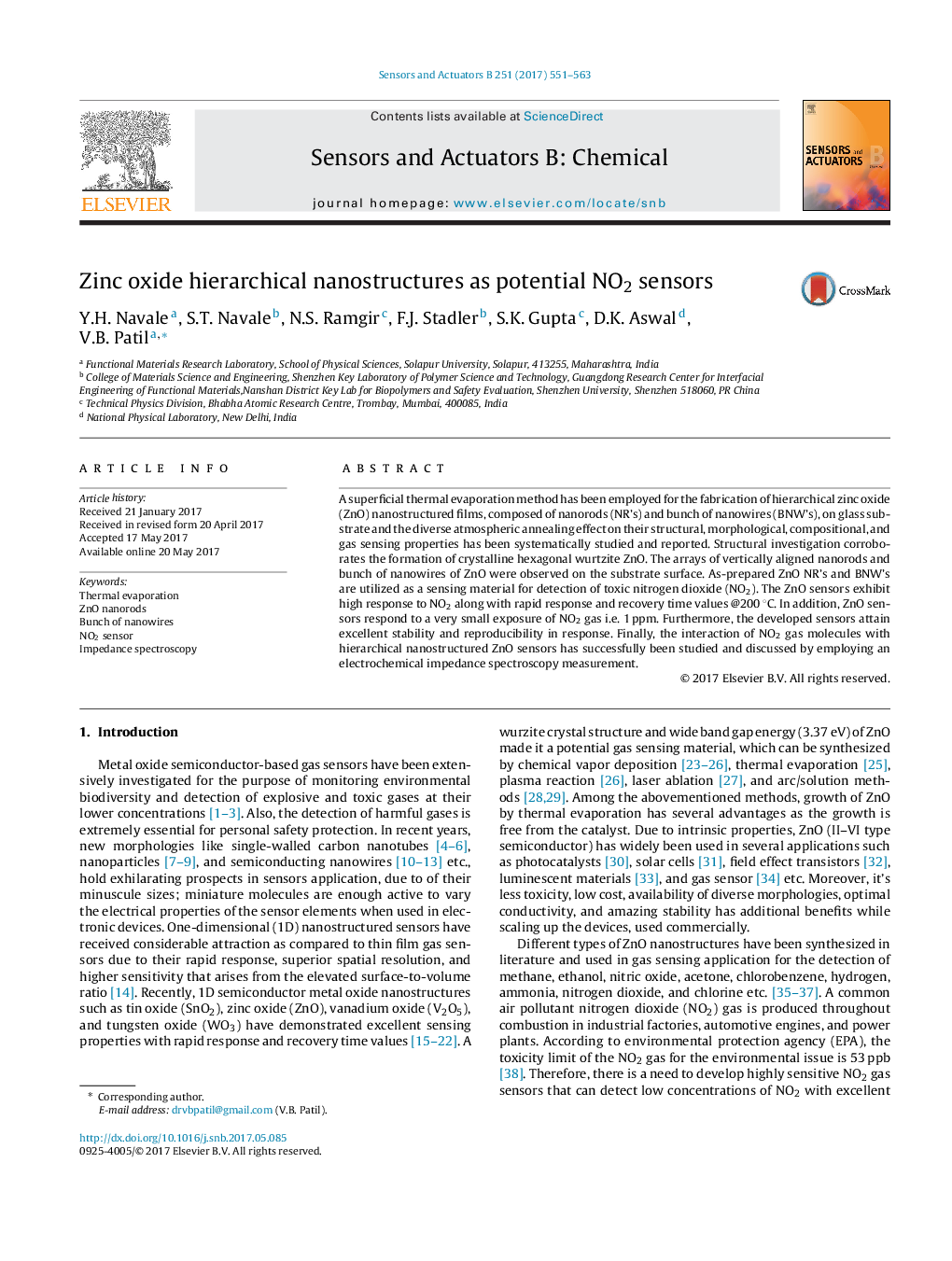| Article ID | Journal | Published Year | Pages | File Type |
|---|---|---|---|---|
| 5008902 | Sensors and Actuators B: Chemical | 2017 | 13 Pages |
â¢Thermal evaporation method was successfully employed for synthesis of ZnO nanorods (NR's) and bunch of nanowires (BNW's).â¢As-synthesized ZnO NR's/ BNW's exhibit hexagonal wurtzite crystal structure.â¢ZnO NR's and BNW's sensor proven highest response of 622 and 101% to toxic NO2 gas.â¢An impendence spectroscopy technique was employed to study the interaction mechanism between ZnO sensor and NO2 gas molecules.
A superficial thermal evaporation method has been employed for the fabrication of hierarchical zinc oxide (ZnO) nanostructured films, composed of nanorods (NR's) and bunch of nanowires (BNW's), on glass substrate and the diverse atmospheric annealing effect on their structural, morphological, compositional, and gas sensing properties has been systematically studied and reported. Structural investigation corroborates the formation of crystalline hexagonal wurtzite ZnO. The arrays of vertically aligned nanorods and bunch of nanowires of ZnO were observed on the substrate surface. As-prepared ZnO NR's and BNW's are utilized as a sensing material for detection of toxic nitrogen dioxide (NO2). The ZnO sensors exhibit high response to NO2 along with rapid response and recovery time values @200 °C. In addition, ZnO sensors respond to a very small exposure of NO2 gas i.e. 1 ppm. Furthermore, the developed sensors attain excellent stability and reproducibility in response. Finally, the interaction of NO2 gas molecules with hierarchical nanostructured ZnO sensors has successfully been studied and discussed by employing an electrochemical impedance spectroscopy measurement.
Graphical abstractDownload high-res image (169KB)Download full-size image
